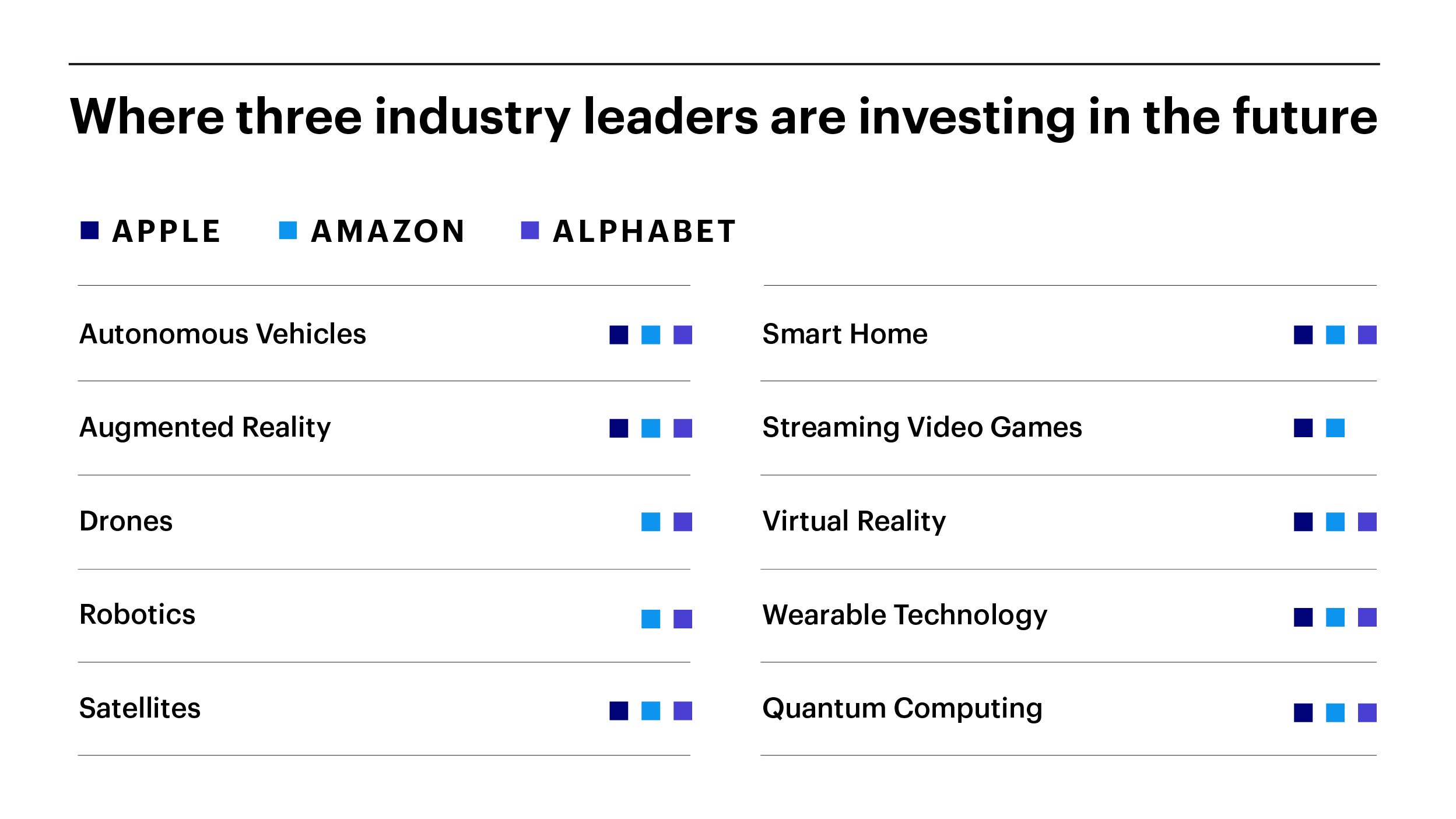
Innovation Unlocking the blockchain ecosystem
Investors interested in cryptocurrency may appreciate that the Invesco QQQ ETF offers exposure to underlying holding companies involved in their creation.

It’s likely that some investors may think of the Nasdaq-100 Index, which the Invesco QQQ ETF tracks, as a way to gain exposure to the technology sector. But in reality, there’s a lot more diversification within the 100 innovative companies in the index than you might expect.
This diversification comes in many shapes, spanning industry sectors, geographies, and even the underlying business segments of technology companies. Below, we delve into the characteristics of the Nasdaq-100 and offer up some in-depth (and likely unexpected) insights into three of the most famous companies in the world.
Sector diversification
By definition, the Nasdaq-100 includes the 100 largest non-financial companies in the Nasdaq Composite Index. It might surprise some investors to find that barely 50% of Nasdaq-100 companies are in the information technology sector, with the rest divided among communication services, consumer discretionary, health care, industrials and even a few utilities.
As of January 31, 2023. Sector allocations are subject to change.
The 10 largest Nasdaq-100 companies comprise more than 48% of the index’s market capitalization.1 These companies span multiple sectors, with information technology representing about 55% of the top-10 market cap and the rest allocated across communication services and consumer discretionary stocks.
The Nasdaq-100’s largest components include global industry leaders that have been building and broadening their portfolios of products and services for many years. Our sampling below highlights the diversification characteristics of one company from each of the three top-10 sectors — information technology, consumer discretionary, and communications services — based on their revenue sources and geographies.
While the above companies are engaged in a diverse set of businesses, they all share one aspect of their diversification strategies: investments in cutting-edge innovation that are poised to redefine how historically core industry sectors—e.g., finance, health care, manufacturing and transportation—conduct business. The table below highlights investments in research & development, products and services at the forefront of these advances.

Source: 2021 Company Annual Reports (10-Ks).
Select the option that best describes you, or view the QQQ Product Details to take a deeper dive.

Investors interested in cryptocurrency may appreciate that the Invesco QQQ ETF offers exposure to underlying holding companies involved in their creation.

When it comes to anchoring your core portfolio, how do the Nasdaq-100 and S&P 500 Indexes compare?
NA2743821
Index holdings are not buy/sell recommendations, nor should they be construed as an endorsement for the companies discussed herein.
This does not constitute a recommendation of any investment strategy or product for a particular investor. Investors should consult a financial professional before making any investment decisions.
All investing involves risk, including the risk of loss.
Past performance does not guarantee future results.
Investments cannot be made directly in an index.
The opinions referenced above are those of the author as of February 9, 2023. These comments should not be construed as recommendations, but as an illustration of broader themes. Forward-looking statements are not guarantees of future results. They involve risks, uncertainties and assumptions; there can be no assurance that actual results will not differ materially from expectations.
The Global Industry Classification Standard was developed by and is the exclusive property and a service mark of MSCI, Inc. and Standard & Poor’s.